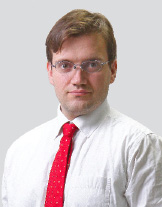作者簡介:
郭史蒂夫 歐洲專利律師

現任:
北美智權教育訓練處 /歐洲專利律師
經歷:
- Bryers事務所 歐洲專利律師
- Bugnion SpA事務所 歐洲專利學習律師
- Notabartolo & Gervasi事務所 歐洲專利學習律師
- 歐洲專利局 實習生
- 英國牛津大學生物化學、細胞與分子生物系,生化碩士
- 英國倫敦大學瑪莉皇后學院,智財管理碩士
|
專利審查獲證系統可以非常簡潔地總結為,一個由申請者提出發明內容,接著修改其專利請求項 (即其壟斷權利的範圍) 來克服專利局所找到的有效相關先前技藝的系統,但其修改僅限於申請時所提出的發明內容範圍內。
歸功於優先權的制度,現在讓許多申請者使用巴黎公約與PCT系統,在許多不同的國家用相似但仍有些微差異的專利系統,來保護他們的發明。這些專利系統的基礎是建立在申請者提出的第一個專利申請案,將如同在他自己的國家申請般得到各國的認可。而這些專利系統就能賦予申請人足夠的彈性,讓他們在原始專利最初申請的國家(優先權日)算起的30-32個月內,決定要到哪些國家申請專利。
隨著美國發明法案(美國專利法修正案)的施行,目前大部分國家都使用類似的規定來決定,相對於先前技藝來說,什麼是可專利的發明。而這些規則是建立在全球已揭露的先前技藝之上。若考量這個事實,以及我們上述所見,即申請人只能在他已經提出的專利內容範圍中,對於專利請求項做修改,則將所有源自同一優先案之申請案,在不同國家申請不同的專利範圍而獲證,這會合理嗎?
有些人會理智的說,這樣做並不合理,但也會有其他人爭論說,企圖在某國用比其他國家較大或較小的專利範圍來取得專利的保護是有理由的。這些原因會依據申請案的類型而有所不同,而且其不同之處,可以從特定專利局的審查員慣例、審查費用、一直到特定國家的侵權法規內容,以及什麼是被保護的發明/市場產品而定。
要在不同國家獲得專利,必須根據當地專利代理人在審查階段時,與專利局之間達到的共識來修改其專利範圍(所謂專利申請獲證程序)。然而,如果沒有一個全面性的專利申請策略,或使某人去檢查和控制所有的申請案,以達成申請人希望在全世界一致獲證的結果,只是一昧的外包,在不同國家找不同專利代理人,這種做法是不合理的。
有一個非常明確為什麼這樣做會不合理的原因,就是根據法律以及因此核駁專利申請案的威脅,美國跟印度專利系統都要求申請人向專利局揭露所有他已經知道的相關先前技藝。平均而言,關於這個部分,在其他專利局(例如JPO、KIPO和SIPO)開始進行有意義的檢索前,USPTO就會讓許多專利申請案進入專利授證的程序了。因此吾人應該注意申請人向USPTO宣告的相關先前技藝,然後與其他專利局的檢索結果作一比對,來確認兩者之間沒有不連貫的地方。特別是上述所提到的亞洲專利局的檢索結果,其語言差異會讓USPTO審查員不易審查其中內含的和亞洲專利局審查員所引用的所有先前技藝之關聯性。
另一個非常重要的理由,是維持由單一人員去負責指導專利申請獲證程序,讓修正內容必須反映出同一個發明內容,如果申請人想專注在發明的某一方面,他需要有人去指示所有不同國家的專利代理人,都來確認這個發明的特定部分,可以依據該國法律得到最佳的專利保護。假如不同的專利代理人是依照不同基調的策略,自由決定想要怎麼做,特別是如果只用他們當地專利局所引用的先前技藝為基礎來做決定,這目的就極不可能達到。這是因為不同國家的審查員跟專利代理人,對於相同先前技藝的關聯性,可能會達到極為不同的共識。
維持由一個單一人員來負責專利申請獲證程序,以達成策略一致性的最佳理由,就是成本。不同國家的審查員和專利代理人所提出的不同方案,可以表示為所有應對不同官方決定以獲證的方案總合(即使皆是好意為之),這對申請人來說,是在專利申請獲證的時間和金錢上極大的變化。單一負責人至少可以減少這種成本上的差異,並指導各地專利代理人往申請人所希望的方向努力,來降低於專利申請策略差異上的錯誤與成本。這個人應該最好是有經驗的專利代理人,能夠根據申請者的需求,領導不同國家的專利代理人。因為具有經驗就意味著他知道如何縮短時程,以及幫客戶注意可能因犯錯所造成的成本。甚至這個人最好就是當初負責撰寫這份申請案的專利代理人,因為這表示他會很清楚的知道這個申請案中所描述的發明內容與其申請的目的。
About the Author:
Stefano John, European Patent Attorney

Experiences:
- European Patent Attorney, Bryers
- Trainee European Patent Attorney, Bugnion SpA
- Trainee European Patent Attorney, Notabartolo & Gervasi
- Internship, EPO
|
Value of a Coherent Patent Prosecution Strategy
Stefano John NAIP Education & Training Group / European Patent Attorney
The patent granting system can be very briefly summarized as a system wherein an applicant files a description of an invention and then adapts the claims (and therefore the monopoly rights) to reflect what the patent office finds as valid and pertinent prior art, but only within the limits of what is described as his invention at the time of filing.
Many applicants today use the Paris Convention and PCT system to protect their inventions in many different countries with similar, but slightly different, patent systems thanks to a priority system. These systems are based on recognizing an applicant’s first patent application as corresponding to one in their own country. The systems are flexible enough to allow applicants to decide which countries to go into up to 30-32 months from when the original patent was filed in one country (priority date).
With the advent of America Invents Act, it is now accepted that most countries use relatively similar rules to determine what is patentable or not with respect to the prior art. These rules are based on a worldwide disclosure of prior art. If one takes into account that fact and that, as we have seen above, the applicant can only amend his claims to within what is described in an application, does it make sense to obtain granted patents, all deriving from the same priority filing, which have claims with different scope in different countries?
Some would reasonably argue that it makes no sense, while others could argue that there are reasons to attempt to obtain patents with claims having more/less scope of protection than the claims in another country. These reasons depend on the type of application and can vary from patent office examiners practice and costs of prosecution to what the law on infringement in a specific country are and what the invention/market product being protected is.
To obtain a patent in the different countries, one has to rely on local patent agents in the stage of examination on if/how to amend claims, between the patent office and patent agent (patent prosecution). The issue which however makes no sense is outsourcing the prosecution to different patent agents in different countries without having an overall prosecution strategy or one person to check and control that all the applications in the world proceed to grant in the same direction as desired by the applicant.
One very clear reason why this makes no sense is that the US and Indian patent systems require, by Law and under threat of rejection of the patent application, that the Applicant disclose any pertinent prior art that he is aware of to the patent office. Given that, on average, many patent applications are prosecuted to grant by the USPTO before a meaningful search is carried out in some patent offices (for example it can occur with JPO, KIPO and SIPO), it is necessary that somebody is aware of what has been declared to the USPTO as pertinent prior art and that the searches carried out by these offices are correlated to that declaration to check there are no incoherencies. This is especially true for the patent offices mentioned above where the language differences make it difficult for the USPTO Examiners to check the pertinence of all the prior art stored and cited by Examiners at these Asian patent offices.
Another very important reason to maintain one person in charge of directing the prosecution is that the amendments have to reflect the same invention. If the applicant desires to concentrate on one aspect of the invention, it requires one person to direct all the different patent agents to make sure that that specific aspect of the invention is best protected according to national law. This is nigh-impossible if different patent agents have less than coherent strategy and are free to decide on their own, especially if these are just left to decide on patent prosecution based on the prior art cited as pertinent by their local patent office. Examiners and patent agents in different countries can reach very different conclusions on the pertinence of the same prior art!
Another very good reason to maintain a single person in charge of a coherent patent prosecution strategy relates to costs. Different approaches by examiners and patent agents in different countries can mean a total difference in prosecution of office actions (even when done in good faith), which means a wide variation of time and money for the applicant. The single person in charge can at least reduce this variation in costs and strategy by directing local patent agents according to the wishes of the Applicant and therefore minimize strategic errors and costs. Preferably this single person should be an experienced patent agent able to direct different patent agents in different countries according to the wishes of the applicant because the experience means that he knows how to mitigate time and costs for the client as well as being aware of possible errors. It would be even more preferable if the single person were the patent agent who drafted the application, as this means that he would know the description very well and the reasons for drafting it so.
更多歷期精采文章,請參閱智權報總覽 >>
|